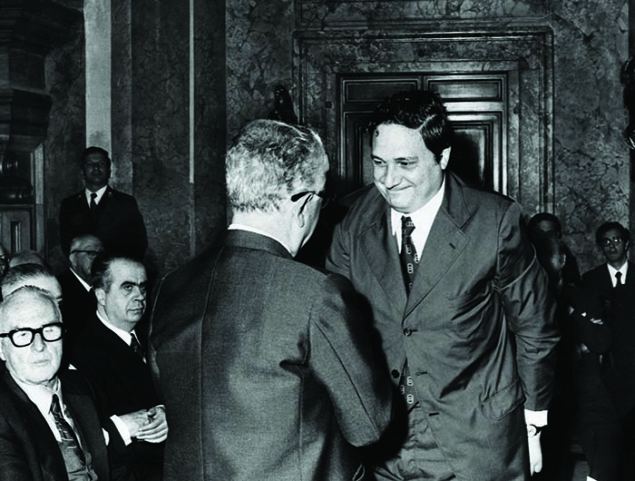Gabriele Veneziano.
The passing of Raoul Raffaele Gatto in Meyrin, Geneva, on 30 September is a big loss for science and for a whole generation of particle theorists. After graduating at the Scuola Normale in Pisa, and a short stay at La Sapienza (Rome), Gatto held prominent positions at Berkeley and Frascati before occupying, successively, the chair of theoretical physics in Cagliari, Florence, Padua, Rome and, eventually, at the University of Geneva.
A member of the Accademia dei Lincei, the Accademia delle Scienze of Turin and the American Physical Society, he received numerous recognitions such as the Enrico Fermi medal and the prize of the President of the Italian Republic. For several decades he was editor of Physics Letters B and deputy director of the Rivista del Nuovo Cimento.

Gatto’s contributions to theoretical physics are too many to be listed here. We may just recall his joint work with Cabibbo on the muon neutrino and on weak hyperon decays (which formed the basis of Cabibbo’s discovery of the angle that carries his name), the Ademollo-Gatto theorem on the absence of first-order breaking of flavour symmetry in weak hadronic decays, his pioneering work on scale and conformal invariance in quantum field theory, and a series of papers on composite Higgs models.
While in terms of scientific achievements Gatto clearly belonged to the class of the theorists of his generation, he was head and shoulders above the crowd as a teacher. It is not easy to pin down the secret of his success in attracting young researchers to theoretical physics and in helping them grow and develop their own individual qualities. Both Luciano Maiani and myself, for instance, were dragged from experimental high-energy physics to theory by his charming, attractive personality. Luciano had already graduated as an experimentalist before joining Gatto’s group in 1964. I had to go through a long period of study and work before being accepted, but it was worthwhile.
When Gatto came to Florence, a group of very promising young researchers followed him one after another: Altarelli, Buccella, Celeghini, Gallavotti, Maiani and Preparata. Gatto created a stimulating, healthy, competitive atmosphere by distributing among us original, challenging research projects. We had to work things out without much help from him, except for letting us know, occasionally and very gently, that there was something that had to be changed in our approach. The whole group (soon dubbed the “gattini”) grew in strength and reputation, and soon we became capable of doing independent research. More senior theorists who were already in Florence (among them Ademollo, Chiuderi and Longhi) were also integrated in the new structure, together with students like myself, Casalbuoni and Dominici. This success story repeated itself when Gatto moved to Padue (with Sartori, Tonin and Feruglio) and then again in Rome (with Ferrara and Parisi).
It is often said that Enrico Fermi created the Italian school of particle physics after World War Two. I believe that, for theoretical physics, Raoul Gatto was the heir of Fermi, who best transmitted his legacy to the next generation.








